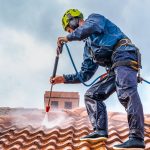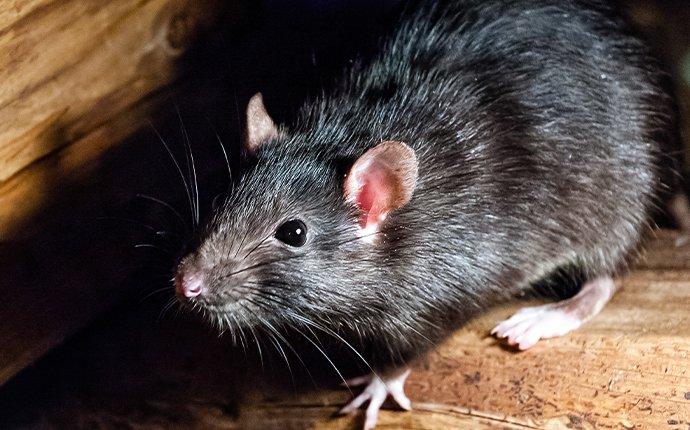Roof rats might be small; however, they can create serious problems for homeowners in St. Louis. These agile rodents sneak into attics, climb on roofs, and quietly settle into spaces where they don’t belong. If left unchecked, roof rats can damage your home and chew through wires. Also, they can pose health risks to your family. Thankfully, you can protect your property from these pests if you learn about their behavior and identify their presence as early as possible. This way, you can contact a provider of St. Louis pest control who can help you handle a rat issue.
Why Roof Rats Are a Problem
Roof rats can cause significant property damage when left unchecked. Since they often establish camps in hard-to-reach places, they can go unnoticed for weeks or months. During this time, they may chew through electrical wiring, which can increase the risk of house fires. Also, they may gnaw on wood, insulation, and pipes, weakening your home’s structure. These rodents can contaminate stored food and surfaces, especially in attics or pantries. Lastly, they can leave behind droppings and urine, which may carry diseases or trigger allergies.
How They Get Inside
Roof rats only need a hole the size of a quarter to enter homes. They can squeeze through vents, climb down chimneys, or use damaged roof tiles as entry points. Homes with overgrown trees near the roof are especially at risk since rats can easily leap from branches to rooflines. Homes in St. Louis are especially vulnerable in fall and winter. As the weather cools, roof rats search for warm and dry shelter, often leading them into attics or garages.
Signs You Have Roof Rats
Catching a glimpse of a roof rat is not easy. They are active mostly at night and prefer to stay hidden. However, below are signs that might point to an infestation:
- Scurrying or scratching sounds. You may hear these sounds in the attic or walls during nighttime hours.
- Droppings. Rat droppings are usually about half an inch long and pointed at both ends.
- Grease marks. You may find these along beams or walls where rats travel frequently.
- Chewed wires, boxes, or insulation. You may come across these items in the attic or basement.
- Nest materials. Rats may use shredded paper, cloth, or plant matter to build nests.
How to Prevent Roof Rats
Preventing roof rats starts with sealing off access points and making your home less attractive to them. Here are a few tips:
- Trim tree branches. Branches should be at least three feet away from the roof to prevent rats from using them as a bridge to your roof.
- Repair roof damage. Rats can take advantage of missing shingles, loose vents, or broken soffits. So, address these issues as soon as possible.
- Seal holes and cracks. walls, eaves, and rooflines. Use metal mesh or caulk to close up these openings.
- Store food in sealed containers. This is important if such containers are stored in attics or garages.
- Keep outdoor garbage cans tightly closed and away from the house. This prevents rats from attacking your garbage and entering your home.
- Clean up pet food and birdseed. These food items can attract rats looking for an easy meal, so do not leave them out overnight.
When to Call a Professional
If you suspect roof rats are in your home, DIY traps and repellents may not be enough. These rodents are cautious and hard to catch. In many cases, it takes a trained eye to find out how they got in, where they are nesting, and how to remove them safely.
Pointe Pest Control in St. Louis, MO, offers expert solutions for homeowners dealing with roof rats and other rodent problems. They can inspect the toughest spots and eliminate infestations. Also, they can help prevent them from coming back. They use proven, family-safe methods to protect your home and your health.

 How can you save money on moving & storage without sacrificing quality?
How can you save money on moving & storage without sacrificing quality?  OK.com Launches in US Market, Integrating AI Technology into Local Classifieds Experience
OK.com Launches in US Market, Integrating AI Technology into Local Classifieds Experience  Learn Everything About In-Ground vs. Above-Ground Pool Elimination
Learn Everything About In-Ground vs. Above-Ground Pool Elimination  The Smart Buyer’s Guide to Custom Canvas Prints in the UK
The Smart Buyer’s Guide to Custom Canvas Prints in the UK  Designing a Factory? Vastu Tips That Could Improve Energy Flow, Productivity & Profit
Designing a Factory? Vastu Tips That Could Improve Energy Flow, Productivity & Profit  How a General Contractor Manages Large Renovation Projects
How a General Contractor Manages Large Renovation Projects  Why Ongoing Support Is More Valuable Than a Low Initial Price When Installing Stairlifts In Scotland?
Why Ongoing Support Is More Valuable Than a Low Initial Price When Installing Stairlifts In Scotland?  How To Repair The Roof Penetration That Causes Vent Pipe Leaks
How To Repair The Roof Penetration That Causes Vent Pipe Leaks 